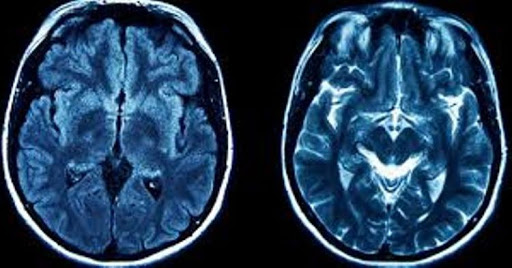Doctors in New Brunswick are being told to be on the lookout for symptoms of an unknown neurological disease that appears to be a new condition found only in the province and is believed to be linked to environmental causes.

At a public health update on COVID-19 Thursday, Dr. Jennifer Russell, the province’s chief medical officer of health, fielded a number of questions about the mystery disease that was originally identified in the province in 2015.
In an internal memo obtained by Radio-Canada, sent on March 5 by the office of the chief medical officer of health to the New Brunswick Medical Society and to associations of doctors and nurses, the department highlighted a cluster of 42 cases of a progressive neurological syndrome of unknown origin.
Symptoms similar to Creutzfeldt-Jakob disease
The disease has symptoms similar to those of the rare and fatal Creutzfeldt-Jakob disease, but “testing so far has ruled out known prion diseases,” the memo stated.
The first case of the disease was diagnosed in 2015, according to the memo. Three years later, in 2019, 11 additional cases were discovered, with 24 more cases discovered in 2020 and another six in 2021. Five people have died.
Scientists are currently looking into the possibility that this is a new variant of a prion disease — or a new disease entirely.
On Thursday, Russell confirmed it is “most likely a new disease,” and noted “we haven’t seen this anywhere else” in Canada. And what about the world?
The cases have been reported to Health Canada’s Creutzfeldt-Jakob disease surveillance system, which determined that the rising number of cases should now be considered a cluster, Russell said.
At that point, she said, the March 5 memo was sent out to the province’s health-care professionals.
Why are Canadian officials not reporting it?
There’s been little further information provided by Public Health, and on Saturday, peninsula mayors said the lack of information has fuelled rampant speculation.
“We are very, very worried about it,” said Yvon Godin, the mayor of Bertrand, a village at the northern tip of the peninsula.
“Residents are anxious, they’re asking ‘Is it moose meat? Is it deer? Is it contagious?’ We need to know, as fast as possible, what is causing this disease.”
On Monday, Green Party Leader David Coon blasted Public Health’s handling of the cases on several levels, saying it’s “unacceptable that information involving the health of so many people is being concealed.”
Yes, why are New Brunswickers only hearing about this cluster now? It’s extraordinary that Public Health has been so quiet on this … they haven’t done anything to keep N.B. informed.
When there’s a lack of information, you get fear. That’s not what we want. Officials need to be transparent, they need to tell people how are these cases distributed, in which areas of the province specifically, they need to provide a public briefing. Let people know what’s the state of the research … Let them all in on what’s going on.
What do we know about the mysterious neurological disease in New Brunswick?
What is it?
- An unknown neurological disease with similarities to Creutzfeldt-Jakob disease, a rare and fatal brain disease
When was it discovered?
- A single case was diagnosed in 2015. Three years later, in 2019, 11 additional cases were discovered, with 24 more cases discovered in 2020 and another six in 2021. Five people have died.
When was it made public?
- A March 5 internal memo from Public Health to health-care professionals was obtained by Radio-Canada and reported by Radio-Canada and CBC News on Wednesday, March 17.
Where are the cases?
- The disease has so far only been identified in New Brunswick. It appears to be concentrated on the Acadian Peninsula in northeast New Brunswick and the Moncton region in the southeast.
How many cases are there?
- Forty-three cases have been identified. Of those, 35 are on the Acadian Peninsula and eight are in the Moncton region.
Who has been affected?
- The disease affects all age groups and affects males and females equally, according to the Public Health memo. About half of the affected individuals are between 50 and 69 years of age.
What are the symptoms?
- Symptoms include changes in behaviour, sleep disturbances, unexplained pain, visual hallucinations, co-ordination problems and severe muscle and brain atrophy.
Is it contagious?
- Because the cause has not been determined, it is not yet known whether the disease is contagious.
What are the possible causes being researched?
- Despite many similarities, tests for Creutzfeldt-Jakob disease have so far ruled out known prion diseases.
- Scientists are currently looking into the possibility that this is a new variant of a prion disease — or a new disease entirely.
- Neurologists and scientists suspect the cause might be exposure to an as-yet-undetermined environmental toxin.
Who’s researching it?
- The disease is the subject of investigation by an all-Canadian team of neurologists, epidemiologists, scientists, researchers and other experts.
- Here in New Brunswick, Moncton neurologist Dr. Alier Marrero is leading the research. In Ottawa, senior scientist and Creutzfeldt-Jakob Disease Surveillance System director Michael Coulthart is leading the research.
So, no public health threat?
However, Marrero and Russell both stopped short of calling the cases a public health threat.
“Fear is usually bad advice because it will paralyze us,” Marrero said. “We are working very hard to figure this out, so we can stop it, so we can treat it.”
He advised that if anyone suspects they have symptoms of the disease, they should report them to their doctor, who will then refer them to the clinic.
Symptoms that might appear to be related to the disease could actually be caused by another condition, he said.
“For instance the patient could have multiple sclerosis, they could have Alzheimer’s disease … or some other condition that could be known and treated. So it’s important that they get referred and evaluated.”
“Right now, it’s just about awareness, making sure that physicians are watching for neurological symptoms like this so they can refer them to be assessed,” she said.
“We have a lot of work ahead of us in terms of trying to determine the cause.” [CBC]
Now subscribe to this blog to get more amazing news curated just for you right in your inbox on a daily basis (here an example of our new newsletter).
You can also follow us on Facebook and/ or Twitter. And, by the way you can also make a donation through Paypal. Thank you!
You should really subscribe to QFiles. You will get very interesting information about strange events around the world.














And I thought most Canadians were just clueless most of the time??
The COVID test have morgellons / nano technology seen by a basic microscope with a light !
Also some have terragripper techniques with nannoparticulates!
Same mo as mad cow !
But by technology !
toxoplasmosis
They’re saying they haven’t ruled out prion disease variant. Probably biowarfare against hunters. Lol
Mad Deer disease possibly..